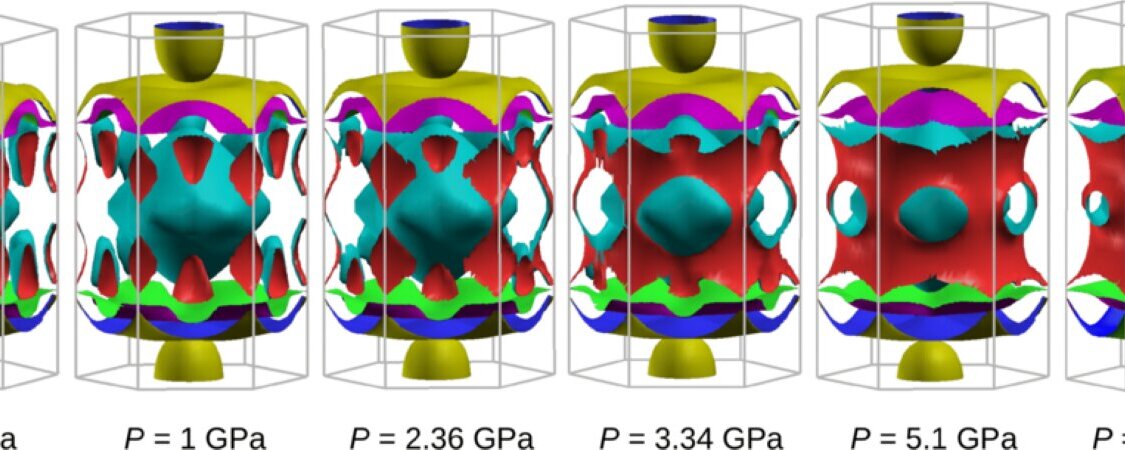Mycelium, the hidden network behind mushrooms, can be grown into durable, low-carbon materials.



Table salt and refined sugar look white to our eyes, but that is only because their individual colorless crystals scatter visible light. This feature of crystals is not always desirable when it comes to materials for optical and electrical devices, however.
Metal-organic frameworks are one such material. Crystalline with micropores, thin films of these nanomaterials have been attracting attention as a next-generation material that could also have an impact on environmental issues such as hydrogen storage and carbon dioxide capture.
An Osaka Metropolitan University Graduate School of Engineering team has found a way to control the growth of crystals on such thin films so that light scattering is reduced significantly.

Scientists led by Nanyang Technological University, Singapore (NTU Singapore) investigators have made a significant advance in developing alternative materials for the high-speed memory chips that let computers access information quickly and that bypass the limitations of existing materials.
They have discovered a way that allows them to make sense of previously hard-to-read data stored in these alternative materials, known as antiferromagnets.
Researchers consider antiferromagnets to be attractive materials for making computer memory chips because they are potentially more energy efficient than traditional ones made of silicon. Memory chips made of antiferromagnets are not subject to the size and speed constraints nor corruption issues that are inherent to chips made with certain magnetic materials.


CU Boulder researchers have introduced a solution to improving the performance of large-scale desalination plants: stimulated Raman scattering (SRS).
Published in the journal Environmental Science & Technology, the laser-based imaging method allows researchers to observe in real-time membrane fouling, a process where unwanted materials such as salts, minerals and microorganisms accumulate on filtration membranes.
Worldwide, 55% of people experience water scarcity at least one month a year, and that number is expected to climb to 66% by the end of the century.


An international team of researchers led by Lancaster University has discovered a highly efficient mechanism for shaking magnets using very short light pulses, shorter than a trillionth of a second. Their research is published in Physical Review Letters.
The discovery of new fundamental properties and phenomena in magnetic materials is essential for the development of faster and energy-efficient devices.
Using a very short electromagnetic pulse to shake the magnetization, researchers investigated its effect on the magnetization steering angle in two similar magnetic materials with different electronic orbitals. After shaking the magnet and subsequently analyzing its magnetic state, they found that interaction between orbital motion and spinning enables a 10-fold larger spin deflection by the light pulse than the one without such interactions.

A simple instrument like mass spectrometer can revolutionize how unknown samples are investigated in the future.
A new method developed by researchers at the Los Alamos National Laboratory (LANL) can spot the origins of illegal nuclear material in just 30 minutes. Requiring only a relatively simple instrument, such as a mass spectrometer, the method can help identify the source of any nuclear material outside regulatory control.
According to the International Atomic Energy Agency (IAEA), theft or improper disposal can result in nuclear and radiological material falling out of regulatory control. In 2,024,124 such incidents were reported to the IAEA, of which at least three were linked to “trafficking or malicious use”
Earlier this year, a leader of a crime syndicate pleaded guilty to trafficking nuclear material in a New York court. The accused had discussed sale of yellowcake uranium with an undercover agent.

The knots in your shoelaces are familiar, but can you imagine knots made from light, water, or from the structured fluids that make LCD screens shine?
They exist, and in a new Nature Physics study, researchers created particle-like so-called “vortex knots” inside chiral nematic liquid crystals, a twisted fluid similar to those used in LCD screens. For the first time, these knots are stable and could be reversibly switched between different knotted forms, using electric pulses to fuse and split them.
“These particle-like topological objects in liquid crystals share the same kind of topology found in theoretical models of glueballs, experimentally-elusive theoretical subatomic particles in high-energy physics, in hopfions and heliknotons studied in light, magnetic materials, and in vortex knots found across many other systems,” explains Ivan Smalyukh, director of the Hiroshima University WPI-SKCM² Satellite at the University of Colorado Boulder and a professor in CU Boulder’s Department of Physics.

Scientists have discovered a way to efficiently transfer electrical current through specific materials at room temperature, a finding that could revolutionize superconductivity and reshape energy preservation and generation.
The paper is published in the journal Physical Review Letters.
The much-sought-after breakthrough hinges on applying high pressure to certain materials, forcing their electrons closer together and unlocking extraordinary electronic behaviors.